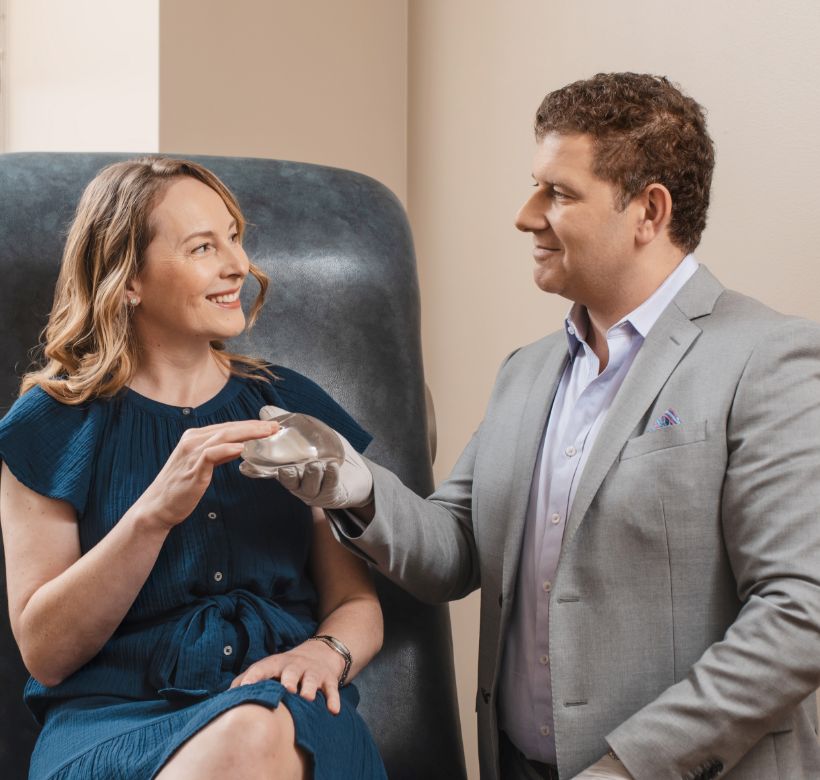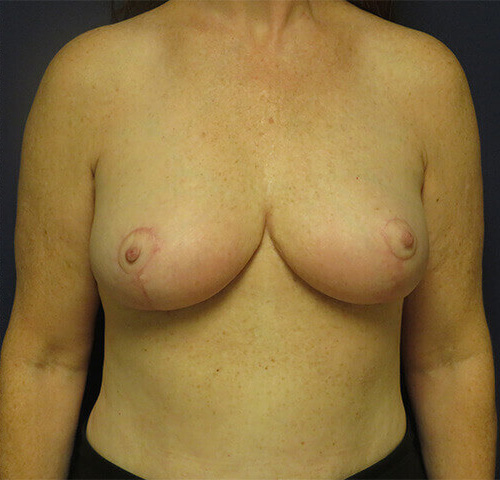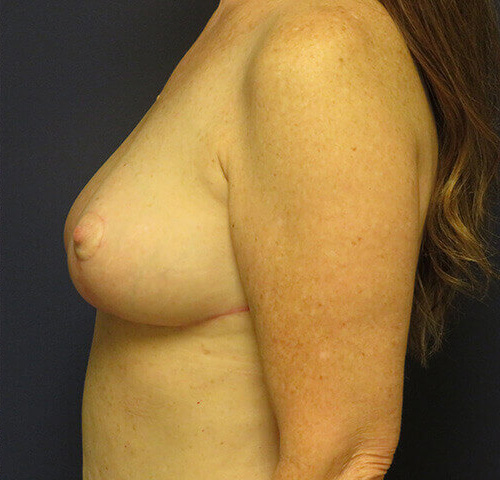Breast Reduction
A breast reduction, or “reduction mammoplasty”, is primarily a functional procedure, though clearly one with aesthetic considerations. It is designed to treat typical symptoms associated with large breasts (shoulder, neck and / or back pain, difficulty finding bras that fit, shoulder strap grooving, irritation along the chest wall under the breast and discomfort during physical activity) while improving breast shape. This is typically accomplished by removing variable amounts of excess skin, breast and subcutaneous tissue while reducing the diameter of, and lifting the nipple / areola. Breast reduction surgery is often confused with breast lifting surgery (mastopexy). One key difference between these operations is that a breast reduction almost always includes a mastopexy, though a mastopexy does not always include a reduction.
Get In Touch
How do I know if I’m a breast reduction candidate?
Ideal breast reduction candidates are close to their ideal weight and often demonstrate:
- Large breasts that are out of proportion to the rest of their body
- Chronic pain in the shoulders, neck and / or back
- Chronic irritation or a history of infections within the breast folds
- Shoulder strap grooving
- Difficulty finding bras / clothing that fits
- Limitations in physical activity
- Self-consciousness about the size of their breasts
What Are Other Differences Between A Breast Reduction And A Breast Lift (Mastopexy)?
| Mastopexy | Reduction | |
| The areola is reduced in diameter and repositioned, with the nipple, to a higher, more youthful position on the breast | + | + |
| Breast volume is removed | +/- | + |
| Skin of the breast is tightened to provide a youthful, rejuvenated appearance | + | + |
| An incision is placed around the areola | + | + |
| A vertical incision is placed under the areola down to the breast fold | +/- | + |
| An incision is placed under the breast | +/- | + |
| Includes liposuction | +/- | +/-
Not covered by insurance. Inquire at the time of your consultation. |
| Covered By Insurance | No | +/- |
| Done as an Outpatient | + | + |
| Requires Surgical Drains | +/- | +/- |
Photo Gallery
 Before
Before
 After
After
 Before
Before
 After
After
Q. How do I know if a breast reduction will be covered by my insurance?
A. Insurance companies have very strict requirements when determining if a breast reduction is medically necessary. Though it varies between insurance companies, most require documentation of both long-standing symptoms of large breasts (see above) and failure of conservative, non-surgical interventions (physical therapy, massage therapy, chiropractic interventions, over-the-counter pain medications etc.). Additionally, insurance companies typically require a minimum amount of weight be removed from each breast that is proportional to your height and weight. At the time of your consultation Dr. Gougoutas will review these requirements with you to determine if your breast reduction is medically necessary.
Q. Can I breastfeed after a breast reduction?
A. Maybe. While many women are able to breastfeed after a reduction, many are not able to do so. Whatever your baseline breastfeeding potential is, it will be reduced after undergoing a breast reduction. If breastfeeding is important to you, it is recommended to wait until you are done doing so before pursuing a reduction.
Q. How long after I’m done breastfeeding should I wait before getting a breast reduction or lift?
A. Changes to the breast tissues may be ongoing for up to a year following breastfeeding. In general, it is recommended that you wait at least 8-12 months after completion of breastfeeding to pursue a reduction.
Q. I’ve had a breast reduction in the past and think I need another one. Is this possible?
A. Yes, a second breast reduction is possible. However, a second breast reduction carries increased risks compared to a primary breast reduction and, in general, less tissue can be removed during a second breast reduction.
Q. Do I need a mammogram before my breast reduction?
A. If you are 40 years old or older, or otherwise have a strong family history of breast cancer, a mammogram will be required before pursuing your reduction. Regularly scheduled mammograms will also be required following your breast reduction.
Q. Where are breast reduction scars located?
A. Most commonly, the scars for a breast reduction are seen around the nipple, below the nipple to the breast fold, and within the breast fold- like an “anchor” when viewed from the front.
